Holiday Appliance Breakdown Prevention: How Maple Ridge Homeowners Can Avoid Disaster During Peak Cooking Season
Dreading the thought of your oven dying mid-turkey or your dishwasher flooding right before guests arrive? You’re not alone – statistics show that 67% of Americans have experienced kitchen appliance breakdowns while preparing holiday meals, with ovens failing at an alarming 54% rate during peak cooking season.
Picture this: It’s Christmas morning, your family is gathered around, and you’ve just put the turkey in the oven when suddenly – nothing. No heat, no light, just the sound of your holiday plans crashing down faster than a house of cards. As someone who’s lived through the absolute chaos of a refrigerator giving up the ghost on Thanksgiving Eve (spoiler alert: it’s not fun), I can tell you that appliance breakdowns during the holidays aren’t just inconvenient – they’re downright traumatic. The good news? With some strategic prep work and a little TLC for your hardworking kitchen companions, you can avoid becoming another horror story statistic. 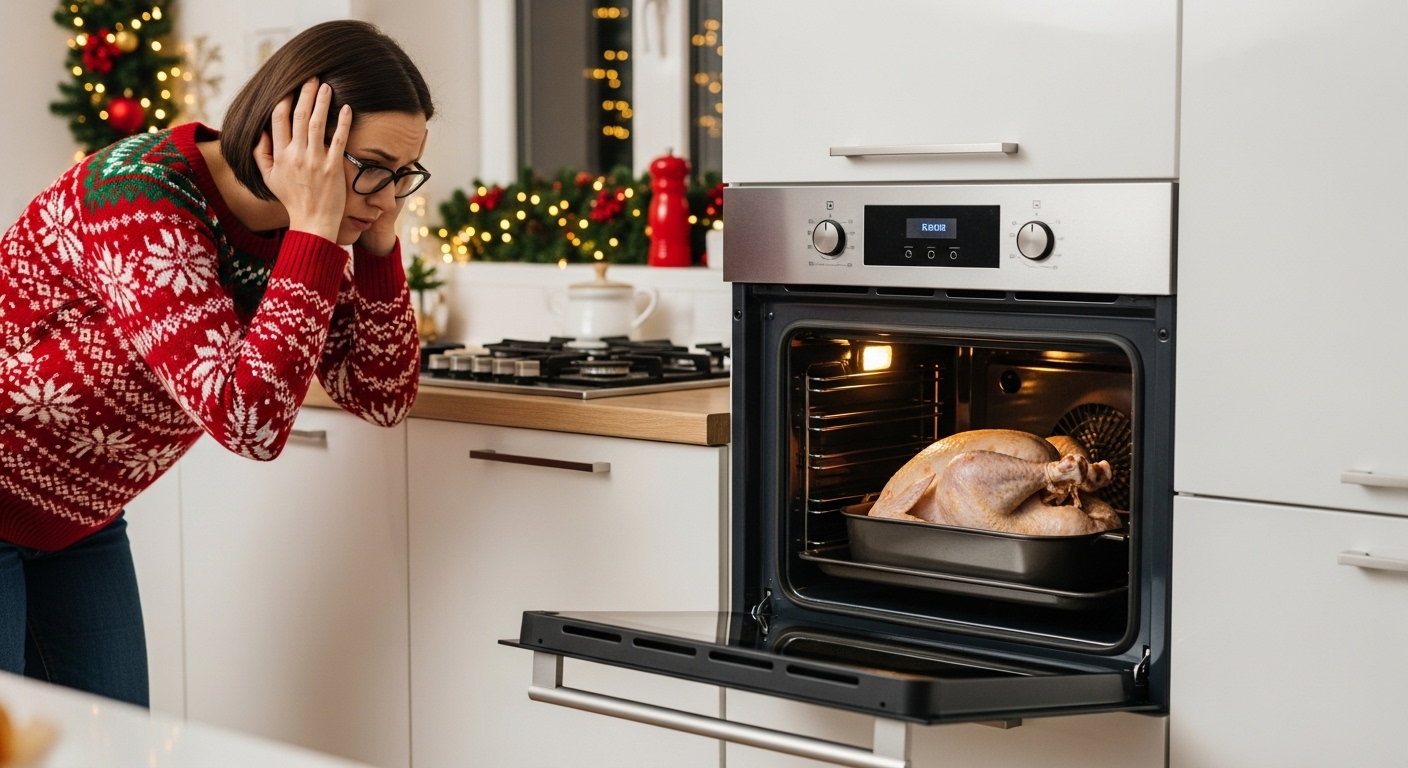 The thing is, our appliances work overtime during the holiday season, and most of us don’t even think about it until something goes sideways. We’re cranking up the oven for hours on end, stuffing our fridges to the brim with party platters, and running our dishwashers like they’re training for the Olympics. It’s like asking your car to run a marathon when it’s only used to neighborhood jogs – without proper preparation, something’s bound to give.
The thing is, our appliances work overtime during the holiday season, and most of us don’t even think about it until something goes sideways. We’re cranking up the oven for hours on end, stuffing our fridges to the brim with party platters, and running our dishwashers like they’re training for the Olympics. It’s like asking your car to run a marathon when it’s only used to neighborhood jogs – without proper preparation, something’s bound to give.
The reality check here is pretty sobering: 30% of all home fires occur during December, January, and February, with many stemming from overworked and under-maintained appliances. But here’s where it gets interesting – the majority of these disasters are totally preventable with some simple maintenance routines and early detection strategies. We’re talking about saving not just your holiday dinner, but potentially thousands of dollars in emergency repairs and replacement costs.
Key Outtakes:
- Test all appliances 2-3 weeks before major holiday events to identify and resolve issues early
- Clean appliance filters, coils, and drainage systems monthly during holiday season to prevent 80% of common failures
- Avoid electrical circuit overloads by distributing holiday lighting and cooking appliances across multiple circuits
- Schedule professional appliance maintenance in September-October before peak holiday usage begins
- Create appliance emergency backup plans including local Maple Ridge repair service contacts for 24/7 availability
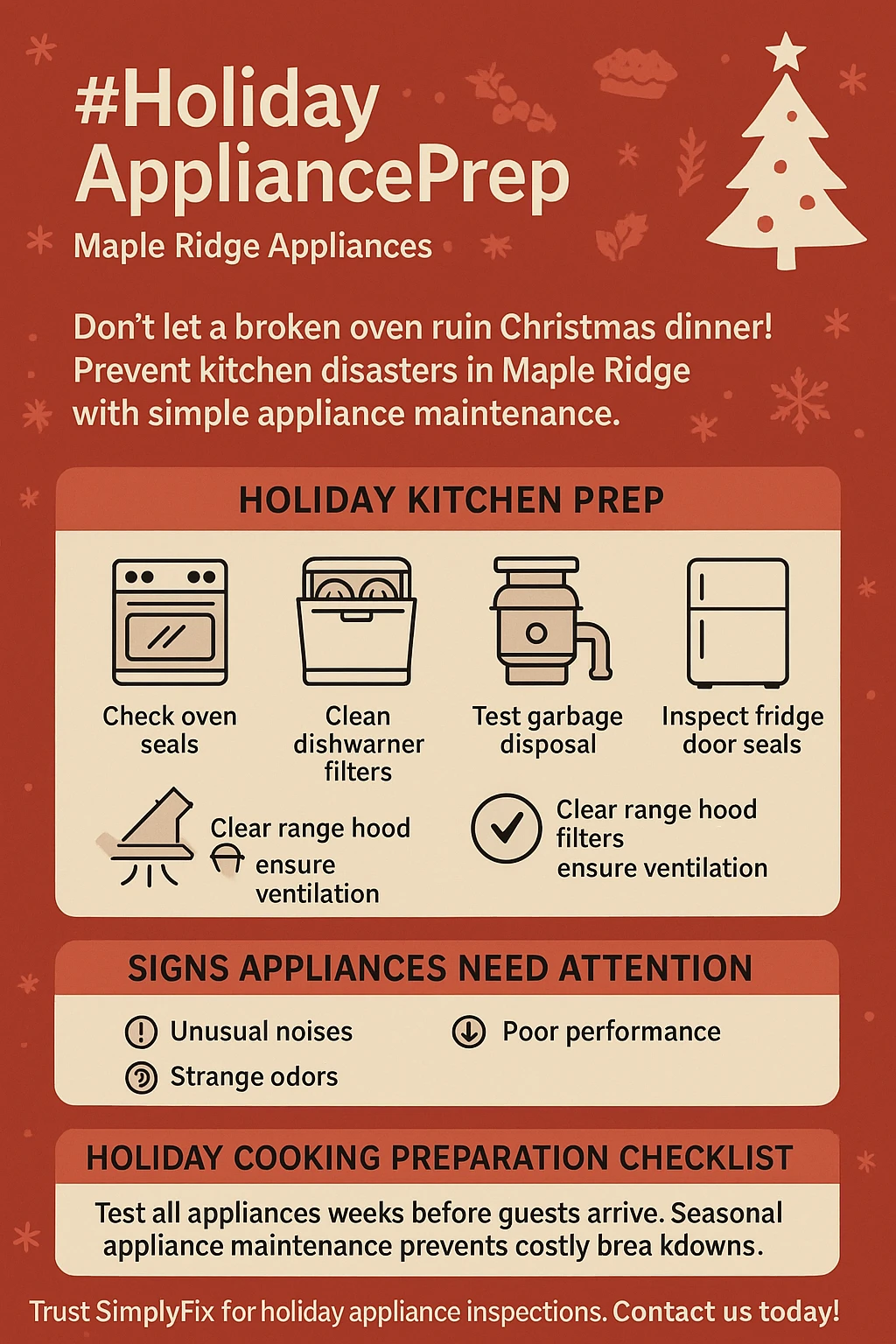
Understanding Why Holiday Appliance Failures Spike
Let’s get real about what’s happening in your kitchen during the holidays. Your poor appliances are basically being asked to perform at championship level when they’ve been cruising at recreational pace all year long. Think about it – your oven goes from maybe an hour of use on a typical day to being on for six to eight hours straight during holiday meal prep. Your refrigerator, which normally maintains a steady temperature with occasional door openings, suddenly becomes a revolving door of leftovers, extra ingredients, and holiday treats.
The statistics paint a pretty clear picture of this phenomenon. According to recent surveys, ovens experience the highest failure rate at 54% during holiday meal preparation, followed by microwaves at 50%, refrigerators at 48%, dishwashers at 45%, and stoves at 43%. These aren’t random failures – they’re the predictable result of increased demand on systems that haven’t been properly maintained or tested under stress conditions. It’s like running a marathon without training; your body (or in this case, your appliances) just can’t handle the sudden intensity.
What makes this even more challenging is that many of these failures happen at the absolute worst possible moments. We’re talking about ovens dying mid-roast, dishwashers backing up during the dinner party cleanup, or refrigerators giving up when they’re packed to capacity with expensive holiday groceries. The timing isn’t coincidental – it’s when these machines are pushed beyond their comfort zones that their weaknesses become apparent.
The underlying issue often comes down to accumulated wear and tear that goes unnoticed during normal usage but becomes critical under holiday stress. A slightly worn heating element might work fine for your everyday baking needs but fail completely when asked to maintain high temperatures for hours. A dishwasher with a partially clogged filter might handle your regular dish loads but back up spectacularly when faced with the greasy aftermath of a holiday feast.
Early Detection and Testing Protocols
Now, here’s where we separate the holiday heroes from the disaster victims – early testing is absolutely everything. I cannot stress this enough: the best defense against holiday appliance catastrophe is running comprehensive tests 2-3 weeks before your big events. This isn’t just turning things on and off; we’re talking about putting your appliances through their paces to see how they handle sustained, high-demand usage. 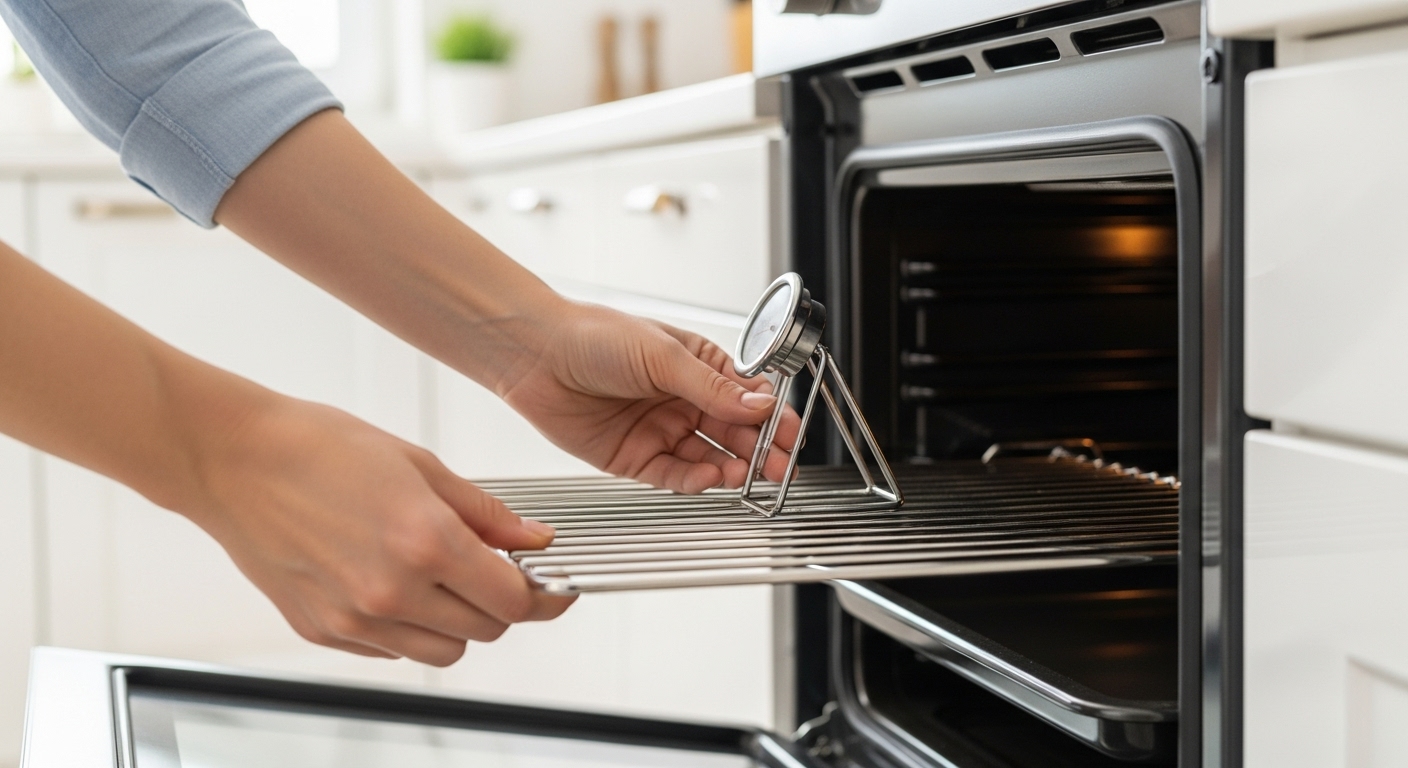 Start with your oven, since it’s statistically the most likely to fail you. Don’t just preheat it – actually cook something that requires the temperature you’ll need for your holiday meals. Run it for at least two hours at your target temperature and pay attention to any unusual sounds, smells, or performance issues. Use an oven thermometer to verify that the internal temperature matches what you’ve set on the dial. If there’s a discrepancy, you’ve got time to get it calibrated or repaired before the big day.
Start with your oven, since it’s statistically the most likely to fail you. Don’t just preheat it – actually cook something that requires the temperature you’ll need for your holiday meals. Run it for at least two hours at your target temperature and pay attention to any unusual sounds, smells, or performance issues. Use an oven thermometer to verify that the internal temperature matches what you’ve set on the dial. If there’s a discrepancy, you’ve got time to get it calibrated or repaired before the big day.
Your refrigerator testing should focus on its ability to maintain consistent temperatures under heavy load conditions. Pack it full of items (you can use containers of water if you don’t have food to spare) and monitor the temperature over 24-48 hours. Check that the ice maker is producing clean, fresh-tasting ice and that water dispensers are flowing properly. Any fluctuations in temperature or issues with ice production are red flags that need professional attention.
For your dishwasher, run several consecutive heavy-duty cycles with full loads to simulate holiday party cleanup conditions. Pay attention to how well dishes are coming out clean, whether water is draining properly, and if the unit is making any unusual noises. If you notice dishes aren’t coming out as clean as usual or if there’s standing water at the bottom after a cycle, you’ve likely got a filter or drainage issue that needs addressing.
Don’t overlook smaller appliances that get heavy holiday use either. Test your stand mixer with heavy doughs that it’ll encounter during cookie and bread making sessions. Run your garbage disposal with the types of food waste it’ll see during holiday cooking prep. These smaller failures can be just as disruptive to your holiday flow as major appliance breakdowns.
Deep Cleaning and Maintenance Essentials
Alright, let’s talk about the not-so-glamorous but absolutely critical part of holiday prep – deep cleaning your appliances. I know, I know, it’s not nearly as fun as planning your menu or decorating, but trust me when I say that a few hours of elbow grease now can save you from disaster later. We’re not talking about your regular wipe-down routine here; this is about getting into the guts of your appliances and clearing out all the accumulated gunk that’s waiting to cause problems.
Starting with your oven, this is where things can get a little messy, but it’s so worth it. All that grease and food debris buildup isn’t just unsightly – it’s actively working against your oven’s performance and can create some seriously unpleasant smoke and odors during your holiday cooking. If your oven has a self-cleaning feature, now’s the time to use it, but here’s the catch – test it at least three weeks before your holiday events because the extreme heat can sometimes cause heating elements or fuses to fail. I learned this the hard way when my self-cleaning cycle killed my oven’s heating element two days before Thanksgiving.
For those without self-cleaning ovens, or if you prefer the hands-on approach, make a paste with baking soda and water and let it sit on interior surfaces for several hours before scrubbing clean. Don’t forget to clean the oven racks, door glass, and check the door seal for any cracks or damage that could let heat escape. A properly sealed oven door is crucial for maintaining consistent cooking temperatures during those long holiday roasting sessions.
Your refrigerator’s condenser coils are probably the most overlooked but critical maintenance item in your entire kitchen. These coils, usually located at the back or bottom of your unit, get covered in dust and pet hair over time, making your refrigerator work harder to stay cool. When your fridge is already stressed from being packed full of holiday food, dirty coils can push it over the edge into failure territory. Vacuum or brush these coils clean, and while you’re at it, clean out the drip tray underneath if your model has one. 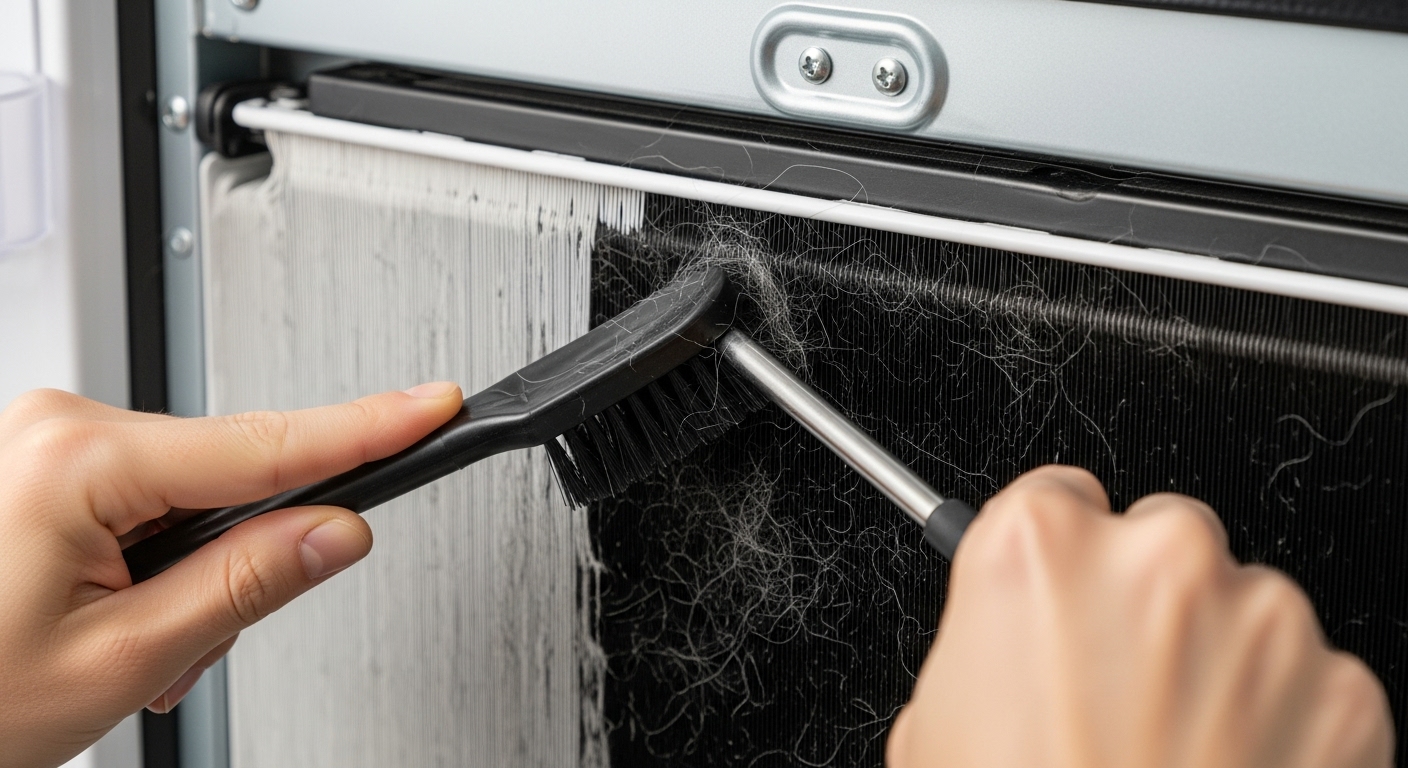 The dishwasher filter is another maintenance item that most people completely forget about, but it’s absolutely crucial for proper performance
The dishwasher filter is another maintenance item that most people completely forget about, but it’s absolutely crucial for proper performance

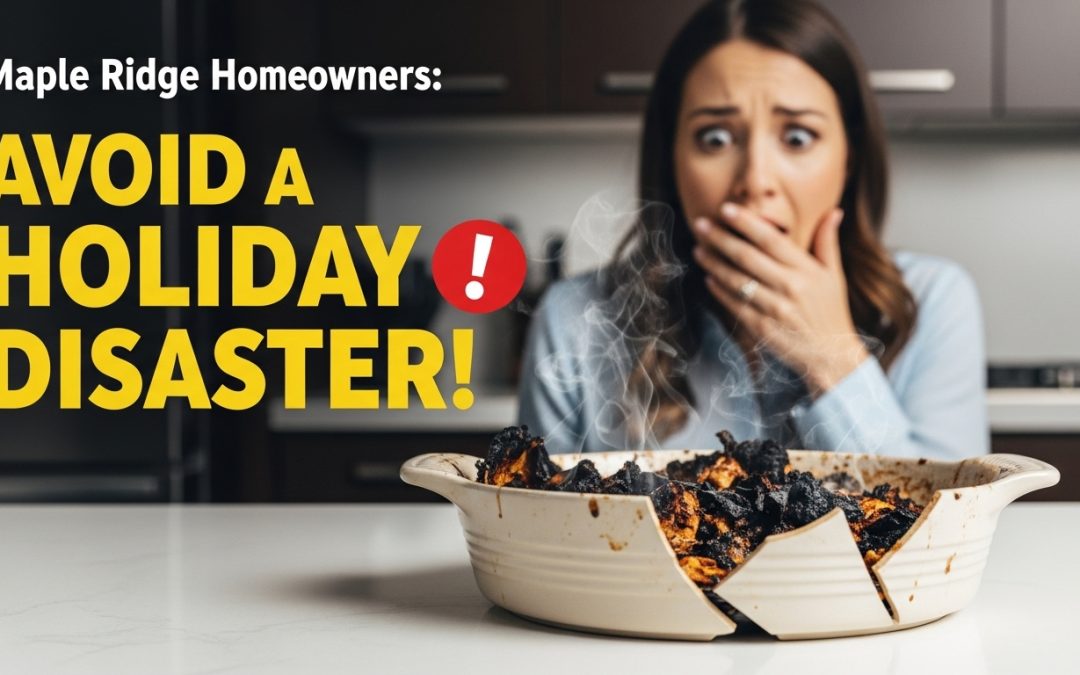
Recent Comments